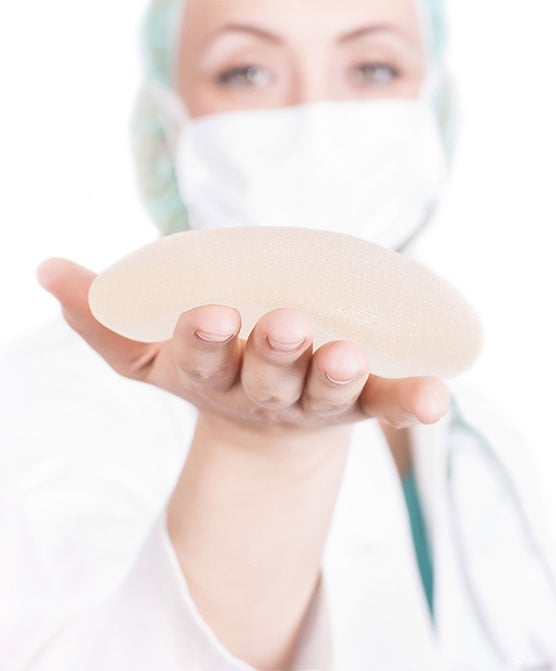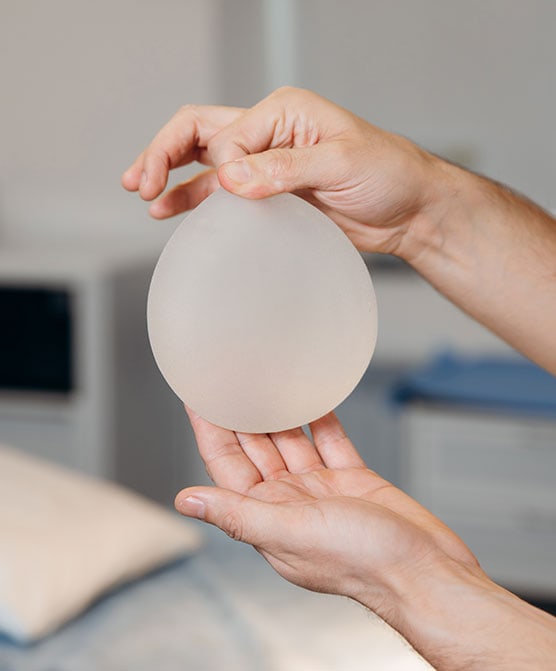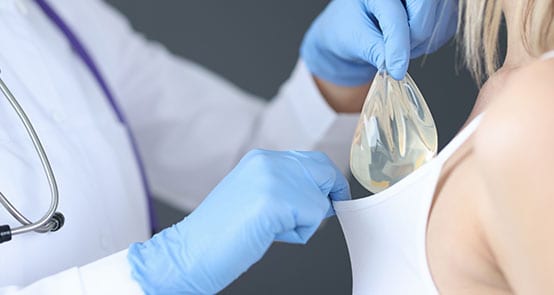Breast Implant Lawsuits
Silicone breast implants were banned in 1992 amid growing safety concerns. Although the ban was lifted in 2006, defective or leaking implants still caused serious harm to thousands of women over the following 17 years.
While there are no breast implant class action lawsuits underway today, any patient living with an implanted medical device should be vigilant and monitor themselves for potential adverse side effects.

Is There Currently a Class Action Breast Implant Lawsuit?
No, there have been no new cases added to the ongoing multidistrict litigation since December 2023, and McIntyre Law is not currently able to accept new plaintiffs in breast implant cases.
Unlike individual cases, class action lawsuits are brought by one or several people on behalf of a larger group of plaintiffs who have suffered similar damages or have a similar claim.
Any settlement or compensation from the lawsuit is divided among the individuals in the group. For example, in 1998, Dow Corning settled a class action lawsuit with 170,000 women who claimed their breast implants made them sick. After negotiations with lawyers, the company eventually agreed to pay the plaintiffs $3.2 billion, or roughly $18,800 per plaintiff.

What to Know Before You File a Lawsuit
Filing a lawsuit is a big decision and one that requires serious legal preparation. Plaintiffs in civil cases are required to meet a burden of proof. This means they must produce documented facts that they were harmed by the defendant’s product.
This usually requires collecting medical records that show healthcare appointments, plastic surgery records, and any follow-up visits. Federal law requires that providers grant patients access to their medical records, but how long those records are retained varies from state to state. Plaintiffs also must file standard court documents, including a complaint or petition that outlines the case for the court, and serve a summons to the defendant.
Some plaintiffs try to handle their personal injury cases alone, but they’re usually disappointed by the results. Professional legal services are essential for those who’re serious about getting results. When suing billion-dollar corporations like breast implant manufacturers, you’re taking on an army of corporate lawyers with enormous financial resources. That’s why McIntyre Law only charges a contingency fee.
What is a contingency fee?
Lawyers who work on a contingency fee basis accept a fixed percentage of any monetary rewards from a lawsuit. Clients pay nothing up front, and if there are no rewards from the case, they don’t pay a dime.
The statute of limitations for breast implant lawsuits
The amount of time you have to file a breast implant lawsuit varies from state to state. In some states, plaintiffs may only have 12 months to file, starting from when they first discovered the defective implant or noticed any related symptoms.
What compensation did plaintiffs get from breast implant lawsuits?
Types of compensation and reimbursements awarded from past breast implant lawsuits include:
- Cash awards
- Medical bills
- Pain and suffering
- Lost wages
- Future medical expenses

Working with McIntyre Law
McIntyre Law litigates breast implant cases because it’s the right thing to do. We want justice for victims who’ve suffered from corporate neglect or medical malpractice. The unfairly injured deserve equal representation in court, someone who understands their pain. We want to be that for you.
Do you have a case for a breast implant lawsuit?
There’s probably a good reason you’re asking this question, so don’t ignore your instincts or what you’re experiencing. The fact is that your breast implant wasn’t designed to last forever. It will rupture at some point in your life. So if you’re experiencing symptoms like numbness, infection, or chronic breast pain, you could have a case for a lawsuit. Asking a legal professional isn’t a waste of time. We’ll know if you have a case and will work hard to get you fair compensation for medical bills and pain and suffering.

Meet Our Breast Implant Attorneys
Our top legal team has decades of experience litigating difficult cases and representing the injured against powerful corporations. We know how to win and get the compensation you deserve.

Noble McIntyre

Jeremy Thurman

Jordan Klingler

Monica Schweighart

Brenda Gómez O’Dell

Sarah Ramsey

Mario D’Angelo, Esq.

Daniel Zonas
Types of Breast Implants
Breast implants are commonly used for augmentation or for breast reconstruction after a mastectomy. To insert the implant, a surgeon makes an incision along the areola, underneath the breast, or in the armpit. The incision site is usually chosen to minimize visible scarring, so it depends on your preference and after consultation with your surgeon. After insertion, the implant is positioned within a pocket area behind or in front of your chest (pectoral) muscle. The method used depends on the type of implant, its size, and your body type. Implants vary in shape and size, but they contain one of two types of materials: saline or silicone gel.
Silicone Breast Implants
Silicone implants are filled with either liquid silicone or a thicker silicone gel with a “gummy bear” consistency. If a liquid silicone implant ruptures, the gel may fill the implant pocket, with the implant remaining inflated. You may be unaware of the rupture, which is why regular visits to your surgeon for an ultrasound or MRI screening are important to test the condition of the implant. Silicone breast implants are FDA-approved for augmentation in women ages 22 or older.
Saline Breast Implants
Saline implants are filled with sterile salt water. If a saline implant ruptures, the body will naturally absorb the liquid, and the implant will collapse. Structured saline implants also contain salt water, but they also contain an inner structure aimed at making the breast feel more natural. Saline implants are FDA-approved for augmentation in women ages 18 or older.
Source: American Society of Plastic Surgeons
Who manufactures breast implants?

Mentor
33 Technology Drive
Irvine, CA 92618
800.636.8678

Sientra
P.O. Box 1490
Santa Barbara, CA 93116-1490
888-708-0808

Allergan
P.O. Box 19534
Irvine, CA 92623
714-246-4500
800-433-8871

Ideal Implant
5005 LBJ Freeway,
Suite 900
Dallas, Texas 75244
214-492-2500
Source: FDA Website
Breast Implant Complications and Side Effects
Most complications from breast implants are “local,” occurring around the chest area. These local complications often result in additional operations to remove the implant and can occur at any time after the procedure. For example, many women experience a hardening of the breast area around the implant, a condition called capsular contracture.
While complications such as infections at the point of incision usually occur soon after a procedure, others like capsular contracture and breast implant rupture may be long-term and ongoing.
Breast implant-associated anaplastic large-cell lymphoma (BIA-ALCL) is a form of cancer of the immune system linked to breast implants, especially textured implants. BIA-ALCL requires victims to undergo surgery, radiation, and chemotherapy. Here’s a list of other breast implant illnesses and reported complications from implants.

Reported Breast Implant Injuries
- Asymmetry
- Hematoma
- Necrosis (dead skin)
- Scarring
- Chest wall deformity
- Rashes
- Pain or tenderness
- Hard knots
- Tingling
- Swelling
- Numbness
- Burning
- Wrinkling or rippling
- Changes in sensation
- Decreased breast size
- Uneven appearance of the breasts
- Lumps in the breast, chest wall, or armpit
- Swollen or enlarged lymph nodes
Source: FDA Website
How do breast implants rupture?
A breast implant rupture occurs when a tear or hole appears in the outer shell of the implant. After a rupture, a saline implant will deflate as its liquid leaks out and is absorbed by your body. However, silicone gel is thicker and may remain in the shell or in the scar tissue formed around the implant, which means the implant may not deflate. Most silicone gel ruptures go unnoticed because of this. Some implants rupture only a few months after surgery, while others may happen 10 or more years later.
Breast implants aren’t designed to last your entire life. At some point, they will rupture, and the longer you have your implants, the higher the chances for a breast implant rupture and the need to have them removed or replaced.
Source: FDA Website
Allergan Breast Implant Recalls
In July 2019, the FDA requested a voluntary recall of Allergan textured breast implants and tissue expanders. Allergan is a global pharmaceutical giant based in Ireland. Of 573 reported cases of breast implant-associated anaplastic large-cell lymphoma (BIA-ALCL), a rare form of cancer, the FDA found that more than 80% reported having Allergan breast implants at the time of diagnosis, with some cases being fatal. The FDA’s action spurred a worldwide Allergan breast implant recall of many products in its Biocell line. Not all breast implant recipients have been shown to develop BIA-ALCL.
There have been multiple Allergan breast implants recalled in other countries, with a worldwide recall affecting the United States. However, the medical community has grown increasingly concerned about links between certain breast implants and cancer. In fact, in February 2019, the FDA issued a letter to healthcare providers, warning of an association between all breast implants and BIA-ALCL, and in December 2018, Allergan had actually suspended sales and withdrawn supplies of its textured implant in Europe. Similar actions have been taken in Canada and Australia, as well, before Allergan’s worldwide recall in July 2019.
What Are Allergan Breast Implants?
Allergan is a global pharmaceutical giant based in Ireland, with operations in nearly 100 countries. The corporation produces several varieties of breast implants, both saline- and silicone-filled, constructed with either smooth or textured surfaces. These medical devices are used cosmetically for breast augmentation, but they have also widely been used, in conjunction with tissue expanders, in breast reconstruction surgery following mastectomies. The Allergan breast implants recalled most recently were the Biocell line of textured breast implants and tissue expanders.
How were Allergan’s Biocell breast implants defective?
In the FDA’s July 2019 announcement that it was calling for a voluntary Allergan breast implant recall, it revealed that it had analyzed 573 reported cases of BIA-ALCL, including 33 deaths, and found that 481 had reported having Allergan breast implants at the time of diagnosis. Additionally, as noted in the agency’s statement, “12 of 13 deaths occurring in patients with BIA-ALCL where the manufacturer was known occurred in patients implanted with an Allergan breast implant at the time of their BIA-ALCL diagnosis.” Although BIA-ALCL doesn’t develop in all breast implant recipients, the agency found that the risk of developing the rare cancer is six times greater with Allergan’s Biocell textured implants than with other textured implants marketed in the United States.
Allergan recalled its Biocell textured breast implants and tissue expanders, not the smooth-surfaced variety. The increased risk of BIA-ALCL appears at this time to largely be associated with textured breast implants — particularly Allergan textured breast implants, which are macrotextured. The textured surface of breast implants, like Allergan’s Biocell variety, are meant to prevent slippage once inserted in the breast, and to minimize scar tissue. Nevertheless, studies are showing a significantly higher instance of BIA-ALCL in the scar tissue and fluid around Allergan textured breast implants. The FDA concludes, “Continued distribution of Allergan’s Biocell textured breast implants would likely cause serious, adverse health consequences and potentially death from BIA-ALCL.”

What are the risks of keeping recalled Allergan breast implants?
The FDA is still investigating links between breast implants and cancer, and has to date only called for the Allergan breast implant recall for that particular reason. However, not all recipients of breast implants — smooth or textured — have been found to have developed BIA-ALCL. Even with the heightened risk associated with textured implants, the cancer is still rare. If you are not experiencing breast implant cancer symptoms, the FDA recommends that you do not choose to have your implants removed. If you have questions or believe you have experienced any symptoms of BIA-ALCL, consult with your doctor.
Our team of top rated personal injury lawyers will be on your side from day one, working toward the successful conclusion of your case through trial or a settlement that could compensate you for damages, medical expenses, lost wages, pain and suffering, and more.

Do Allergan breast implants increase cancer risk?
The FDA has reported that Allergan breast implants increase cancer risk among patients, specifically of developing BIA-ALCL, a rare form of non-Hodgkin’s lymphoma (a cancer of the immune system). In fact, the risk is six times greater with Allergan’s Biocell textured implants than with other textured implants marketed in the United States. To be safe, all recipients of Biocell implants and tissue extenders should know the Allergan breast implant cancer symptoms to look for.
Symptoms of BIA-ALCL:
- Swelling of breast
- Pain in breast
- Breast enlargement
- Breast asymmetry
- Lump in breast or armpit
- Overlying skin rash
- Hardening of breast
- Fluid collection around the implant
Breast Implants and the FDA

The U.S. Food and Drug Administration (FDA) has regulated breast implants since the 1970s. The 1990s saw an increase in implant-related health issues and legal action.
How did breast implants get approved by the FDA?
During the 1960s when the first silicone breast was implanted, little regulation existed. Then as safety concerns began in the late 1970s, Congress passed the Medical Devices Amendments of 1976, requiring all new devices to be regulated. But things turned more serious in the late 1980s with claims that breast implant ruptures caused cancer and autoimmune diseases, so the FDA began requiring manufacturers like Dow Corning to conduct trial studies.
In 1991, the FDA determined there wasn’t sufficient evidence to prove or disprove their safety, banning their use for augmentation, in 1992. In November 2006, the FDA lifted its 14-year ban on their use in augmentation, licensing Mentor and Allergan as manufacturers. Today, the FDA continues to monitor trial studies of breast implants, but safety concerns still exist, most recently with their link to breast implant-associated anaplastic large cell lymphoma.
Source: Online Britannica

